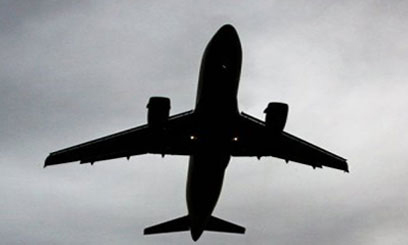
“We wish to state that no Kenya Air Operator has in their fleet the affected aircraft type,” Transport Cabinet Secretary James Macharia said in a statement/FILE
NAIROBI, Kenya, Mar 13 – The Ministry of Transport on Tuesday confirmed that no Kenyan airline operates the Boeing 737 Max 8 that has now been temporarily grounded by authorities in at least five countries following Sunday’s crash of Ethiopian Airlines’ flight ET302 that killed all 157 people on board.
The ministry further said in a statement released Tuesday evening that no foreign carrier operating in Kenyan airspace was using the said model that has since been grounded in the United Kingdom, Australia, Ethiopia, Indonesia, Oman, and Malaysia.
“We wish to state that no Kenya air operator has in their fleet the affected aircraft type,” Transport Cabinet Secretary James Macharia said in a statement.
Macharia also reiterated that Ethiopian Airlines was committed to supporting relatives of those who perished in the accident to travel to Addis Ababa in line with rules set out by the International Civil Aviation Organization (ICAO).
The airline had earlier in the day assured relatives of 32 Kenyans who died in the crash that they would be flown to Ethiopia with accommodation catered for.
Quindos Karanja, a relative to Caroline Karanja who died alongside her three kids and mother (Ann Karanja) told Capital FM the airline had offered to book those who were willing to travel to Addis Ababa on a Tuesday evening flight.
Quindos however said the family would not be sending a representative to Addis Ababa on Tuesday, adding they had decided to return to Nakuru where family meetings are being held.
CS Macharia had said on Monday efforts were being made to contact some seven families yet to be reached by then, with the government saying it had already contacted relatives of 25 Kenyans who were on board the ill-fated plane that crashed six minutes after takeoff from Bole International Airport.
“Out of the 32 passengers who were on board, the teams have managed to reach out and talk to 25 families. Those who would like to fly to Addis Ababa, I’m sure they’ll be facilitated,” the Transport CS said.
Ethiopian Airlines Manager in Charge of Operations in Kenya, Yilma Goshu Gobena, had said the airline was willing to help with travel arrangements and accommodation for the bereaved families.
“Concerning families and relatives who’d like to travel, we’re ready to assist take them go to Addis, give them accommodation, then constant updates will be given from the other side (Addis Ababa),” Gobena told the press Monday morning.
Ethiopian Airlines also announced the recovery of flight data and cockpit voice recorders, components which are vital in the ongoing investigation into the crash.
Gobena told the media the airline had grounded all its Boeing 737 Max 8 out of caution as investigations into the fatal crash continue.
“We’ve grounded all Boeing 737-8 Max planes which Ethiopian Airlines was operating and which was involved in the accident yesterday (Sunday) as a precaution safety measure. This doesn’t mean that the incident was related to any defects on this specific fleet,” he said.
The ET302 flight crashed in Bishoftu some 60 kilometers southeast of Bole International Airport, six minutes after takeoff. Kenya suffered the greatest fatalities – 32 – in the crash, with the flight having been headed to Nairobi’s Jomo Kenyatta International Airport.
The UN Habitat Executive Director Maimunah Sharif said the agency had lost 22 personnel in the crash who were heading to Nairobi to attend a global environment assembly which commenced on Monday.
Canada lost 18 nationals in the crash with Ethiopia losing nine. China, Italy and United States of America had eight nationals in the flight each. The United Kingdom and France lost seven citizens each in the crash.
The 737 Max 8 crash was the second most deadliest in six months, after a Lion Air flight departing from Jakarta in October 2018 having killed all 189 passengers on board 13 minutes after takeoff.
The Sunday crash raised eyebrows on the safety and familiarity of a new anti-stalling mechanism designed to prevent stalling by counter-checking the angle-of-attack of the plane using sensors.
Questions have been raised on whether pilots have been adequately trained to override the autopilot function popularly referred to as Maneuvering Characteristics Augmentation System (MCAS). The 737 Max 8 was first placed into commercial service in May 2017 by a Malaysian airline, Malindo Air, the twin-engine plane rising in popularity due to its fuel saving and long-range capability.
In Africa, the plane has been supplied to Ethiopian Airlines and Mauritania Airlines.
Boeing had by January received 5,011 orders for the plane with plans for the launch of a Max 10 model having been set for 2020.
In a statement following the crash, the airplane manufacturer had said it had dispatched a technical team to assist with investigations into the crash of ET 302.
“A Boeing technical team will be travelling to the crash site to provide technical assistance under the direction of the Ethiopia Accident Investigation Bureau and US National Transportation Safety Board,” a statement released on Sunday read.
“Boeing is deeply saddened to learn of the passing of the passengers and crew on Ethiopian Airlines Flight 302, a 737 MAX 8 airplane. We extend our heartfelt sympathies to the families and loved ones of the passengers and crew on board and stand ready to support the Ethiopian Airlines team,” the company said.
Responding to the concerns on Tuesday, Boeing said it already has a manual available to crew outlining how to override the MCAS in case it is activated by erroneous data.
“Boeing’s 737 MAX Flight Crew Operations Manual (FCOM) already outlines an existing procedure to safely handle the unlikely event of erroneous data coming from an angle of attack (AOA) sensor. The pilot will always be able to override the flight control law using electric trim or manual trim,” the aircraft manufactures said.
According to Boeing, the MCAS command could also be controlled through existing runaway stabilizer procedure which it reinforced in an Operations Manuel Bulletin it issued on November 6, 2018.
The firm said it was working closely with the Federal Aviation Administration (FAA) on a further software enhancement incorporating feedback received from clients, an update the company said “will be deployed across the 737 Max fleet in coming weeks.”
According to Boeing, the new software upgrade will be mandated with FAA’s Airworthiness Directive (AD) no later than April.









































